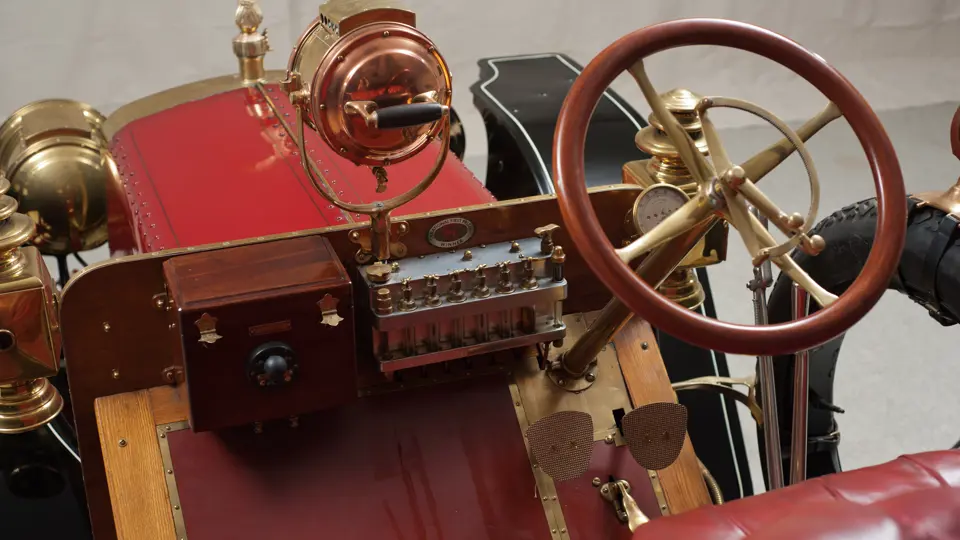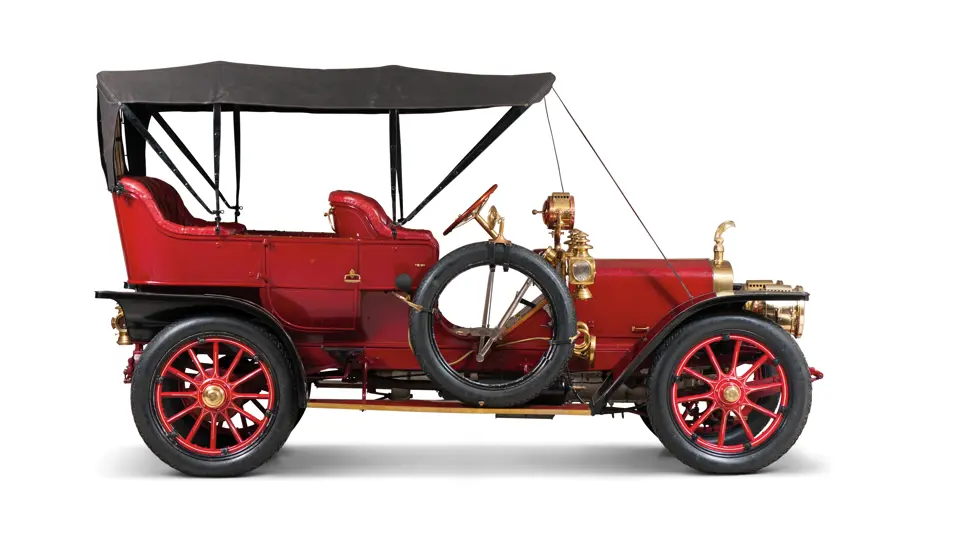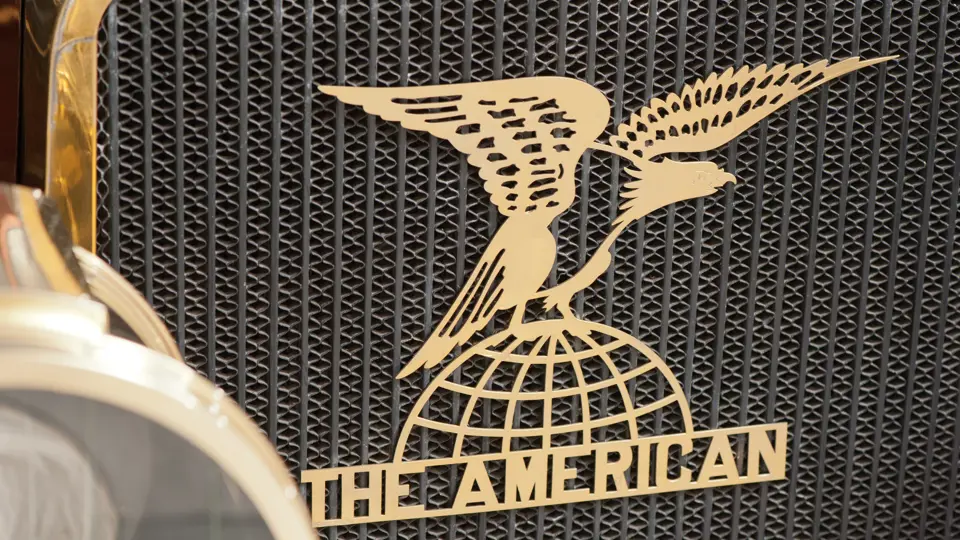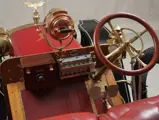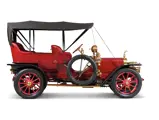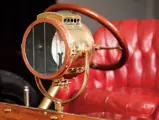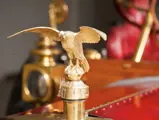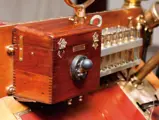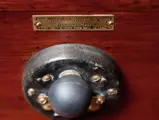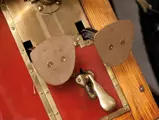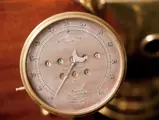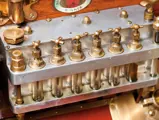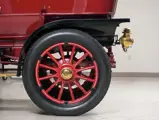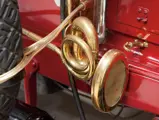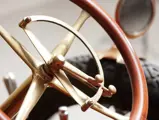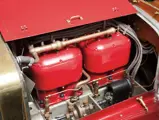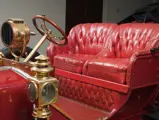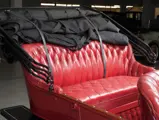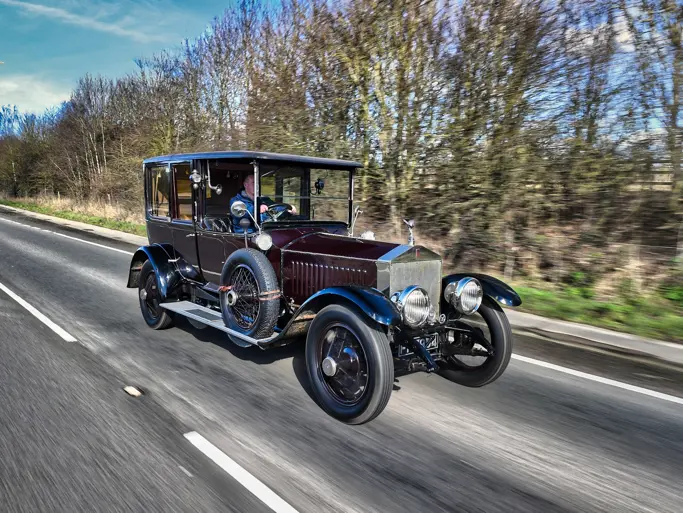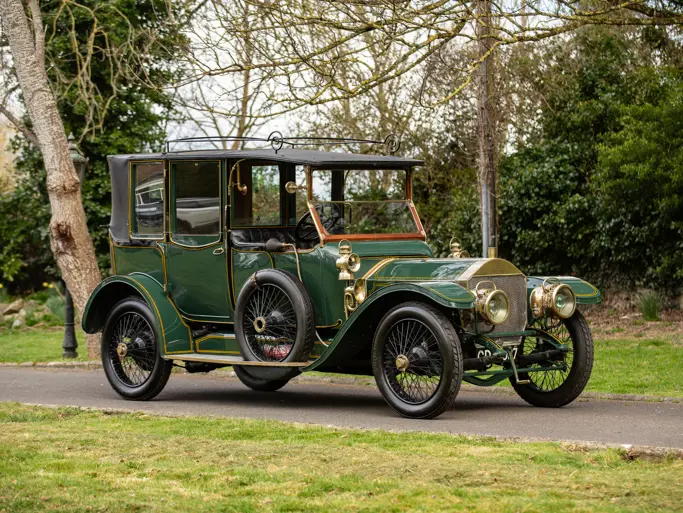35/40 hp, 336 cu. in. L-head four-cylinder engine, three-speed manual transmission, solid front axle with semi-elliptic leaf springs in the front and rear, with rear transverse leaf spring, and rear mechanical drum brakes. Wheelbase: 106 in.
• Ex-Dr. Samuel L. Scher and Richard C. Paine Jr.
• Harry C. Stutz-engineered chassis
• From the estate of John O’Quinn
Before Harry C. Stutz founded his namesake automobile firm, one of his earliest stepping stones was at American of Indianapolis, Indiana. Most remembered today for their underslung chassis, the company also produced an earlier chassis and four-cylinder motor developed by Stutz. An example of the Stutz engineering, this 1906 American Tourist Roi des Belges has a lengthy known history and was formerly the property of noted early collector Dr. Samuel Scher, who was responsible for saving so many important early classics. This American was part of a group of 41 automobiles that were sold by Dr. Scher to fellow pioneer collector Richard C. Paine Jr. The history file includes a copy of Dr. Scher’s original sales proposal to Paine, dated May 25, 1965, and an acknowledgement from Paine, dated April 25, 1967, regarding the final payment. The file further includes the original bill of sale from Schers to Paine.
The 1906 American Tourist Roi des Belges Touring offered here is an excellent and rare example of the Harry C. Stutz designed chassis. Powered by Stutz’s 35/40 hp L-head inline four, it is bodied with handsome and practical Roi des Belges style touring car coachwork finished in dark red with black fenders and upholstered in rich red leather. A black cloth top completes its presentation, along with Rushmore acetylene headlights, Gray & Davis kerosene sidelights, a Castle kerosene taillight, and an imposing Rushmore acetylene spotlight mounted on the wooden dashboard. A single spare wheel with a rearview mirror strapped to its top is installed on the right running board, and the Rubes-style trumpet bulb horn completes the ensemble.
This example is elaborately trimmed in brass throughout, except for nickel plating on some operating controls, such as the gearshift and brake lever, and an elaborate border trim where the hood meets the firewall. An elaborate brass eagle radiator cap mascot, along with the brass radiator ornamentation depicting an eagle perched atop the Earth with script reading “THE AMERICAN,” completes its proud and patriotic presentation. In the offer letter to Paine, the American Tourist is listed as an AACA National First Prize winner; the plaque affixed to the car is undated and therefore a very early example. The doors still bear the stylized “S” monogram of Dr. Samuel Scher. The condition is appropriate to a 1960s period restoration, which Dr. Scher or one of his contemporaries would have had done, and it has aged but is very well maintained and in museum display condition.
The engine is lightly oiled, the brass is well maintained and free of corrosion, the leather upholstery is sound and attractive, and the top and boot are in good order. The Rushmore speedometer shows only 48.2 miles, mileage which is consistent with its age, restoration, and condition. It was acquired by the O’Quinn Collection from Richard Paine’s Seal Cove Museum and now presents the opportunity for another collector to add their name to the roster of stewards that will have the privilege of continuing to preserve this important motor car, along with its important collection of documentation.




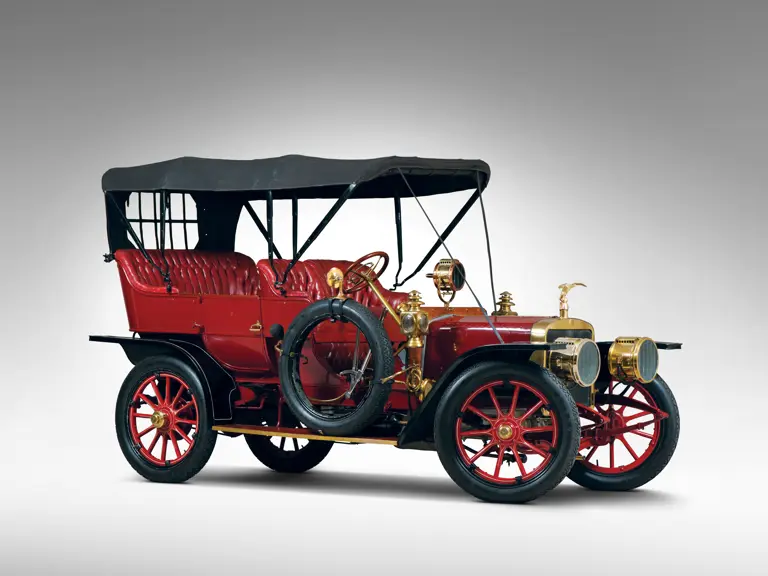
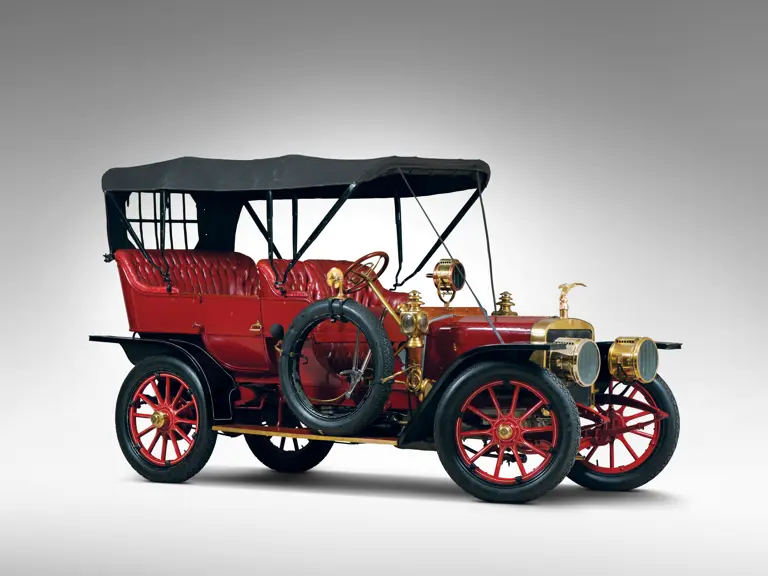
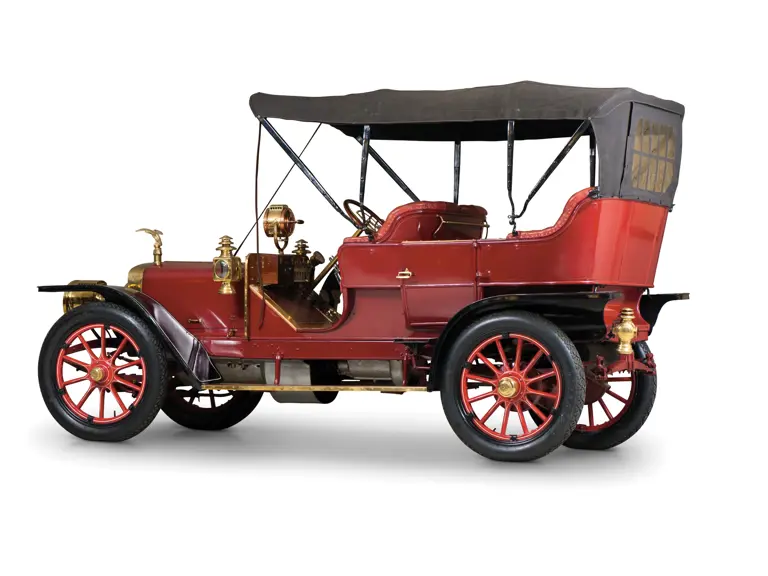
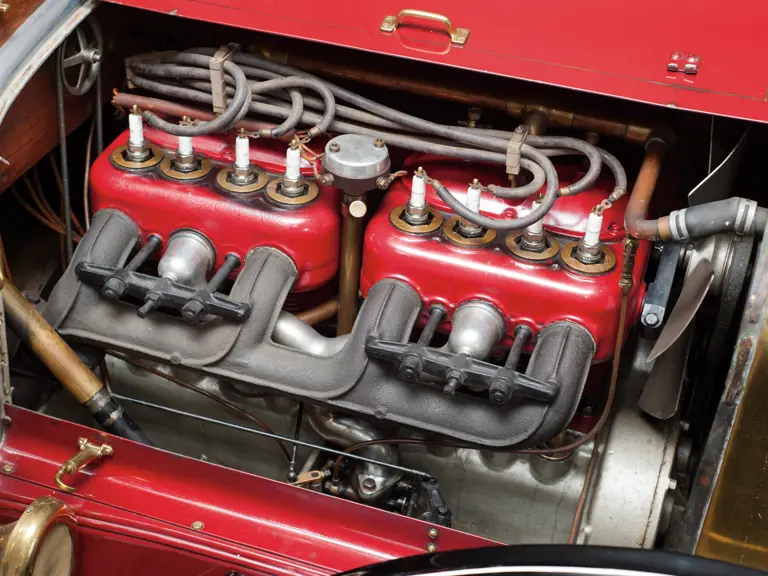

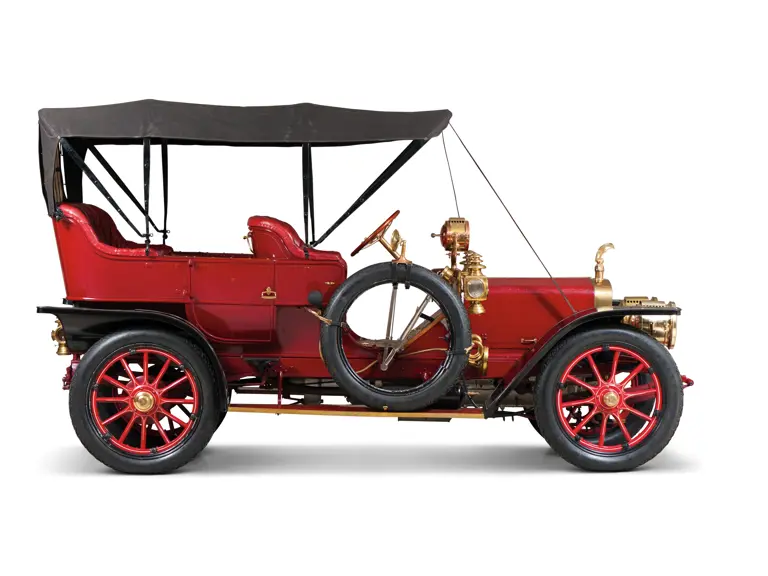
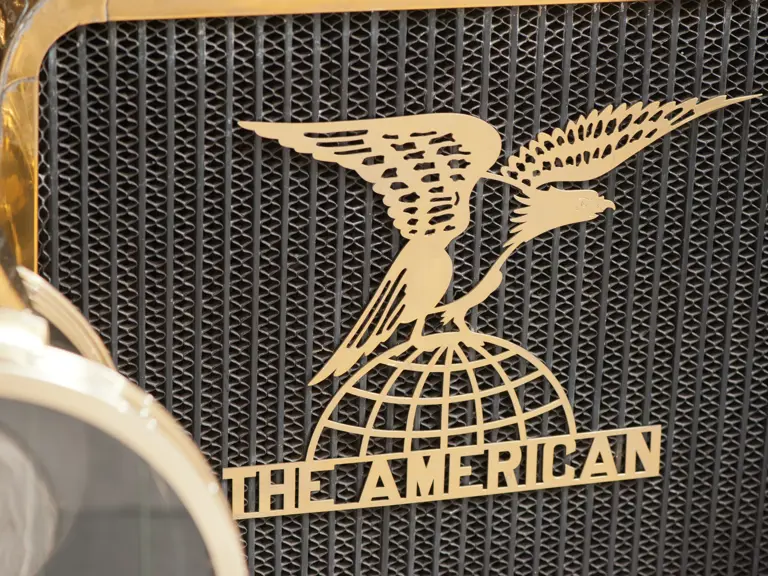
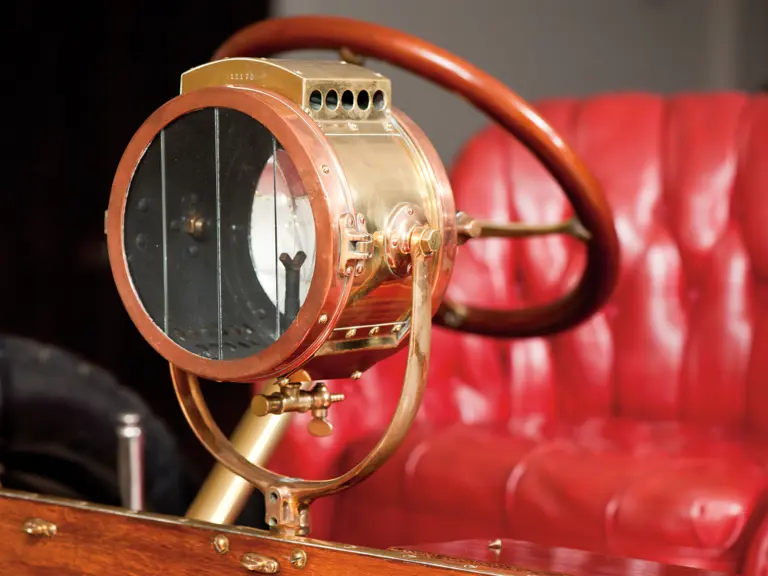
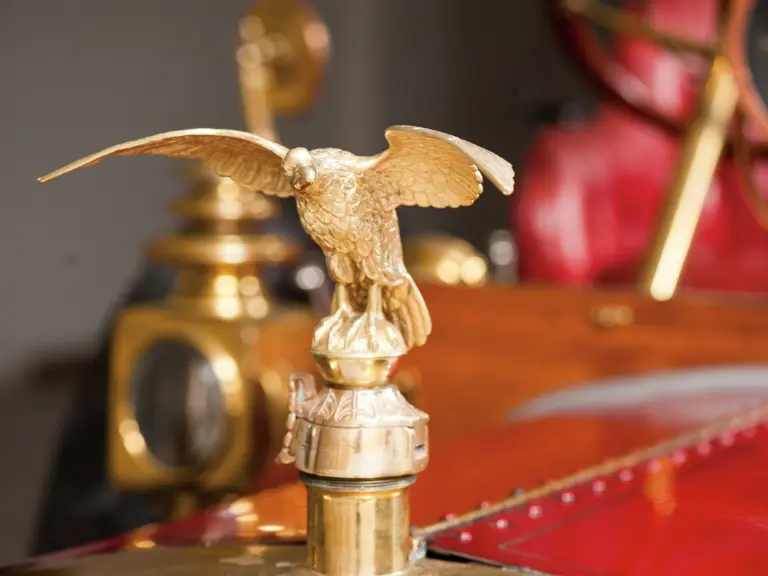
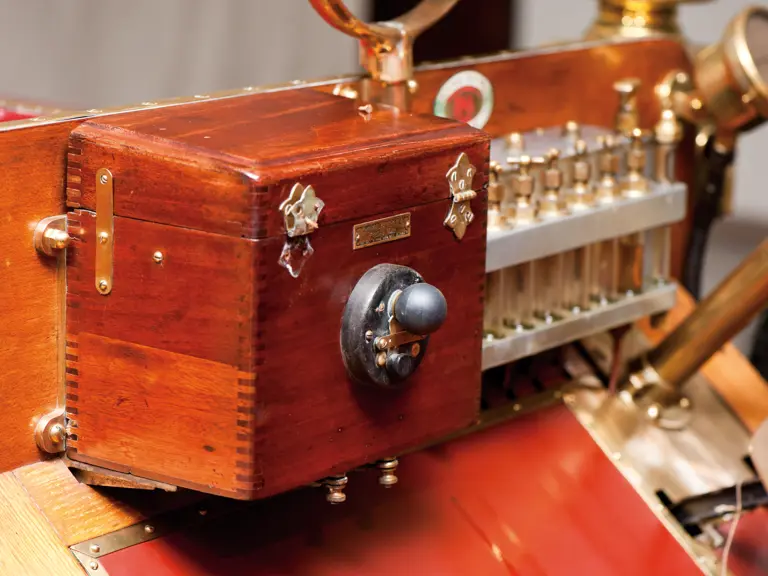


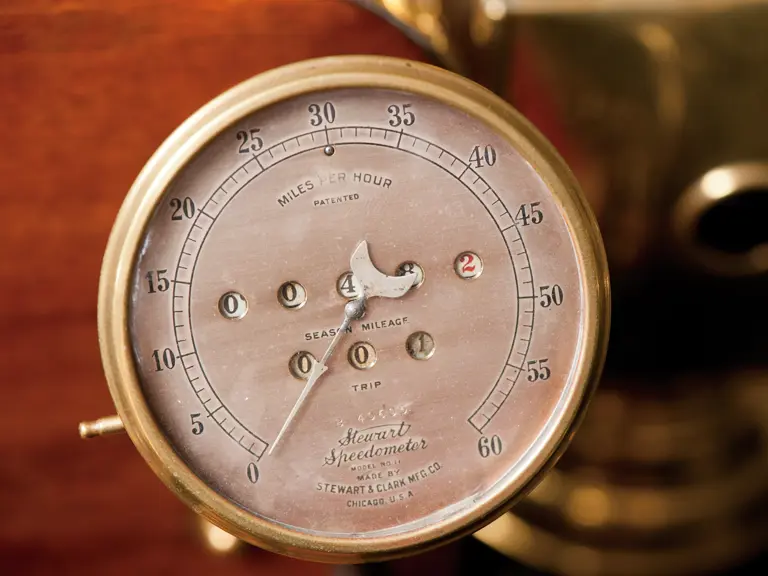
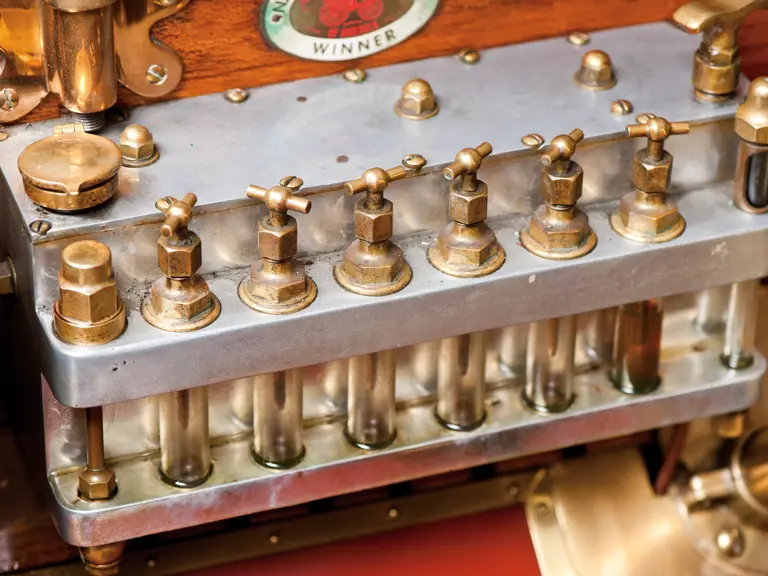
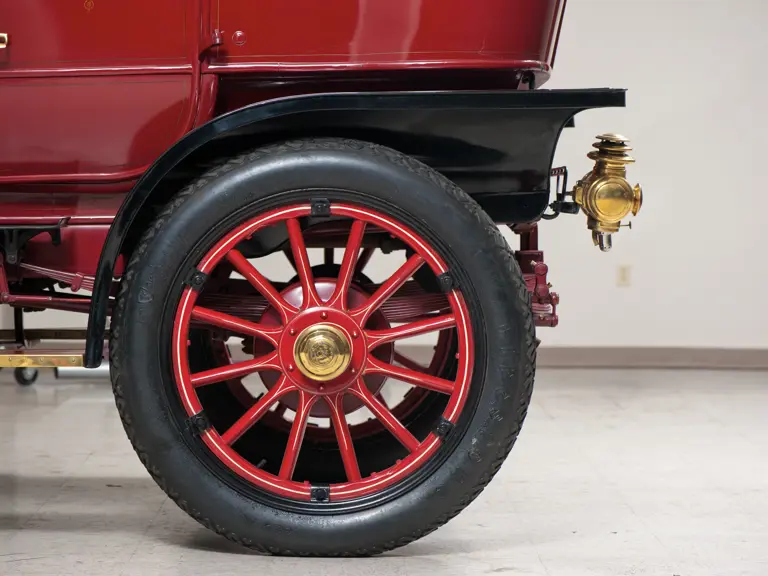


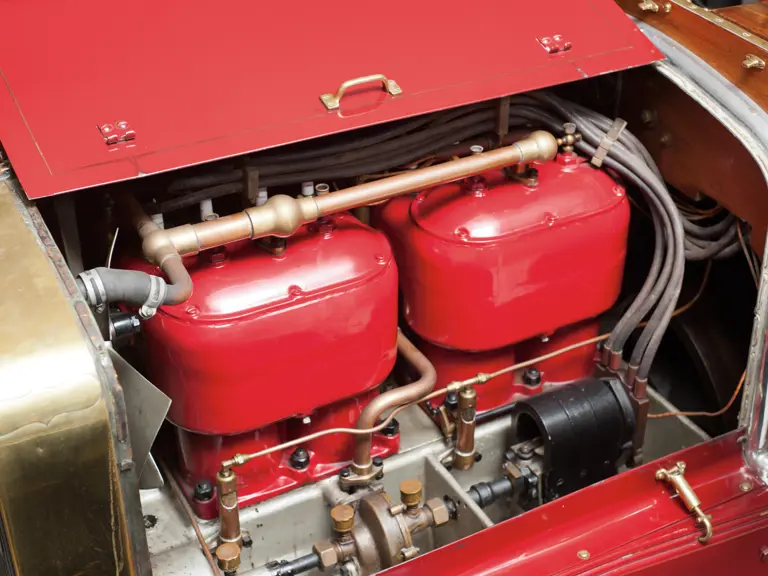
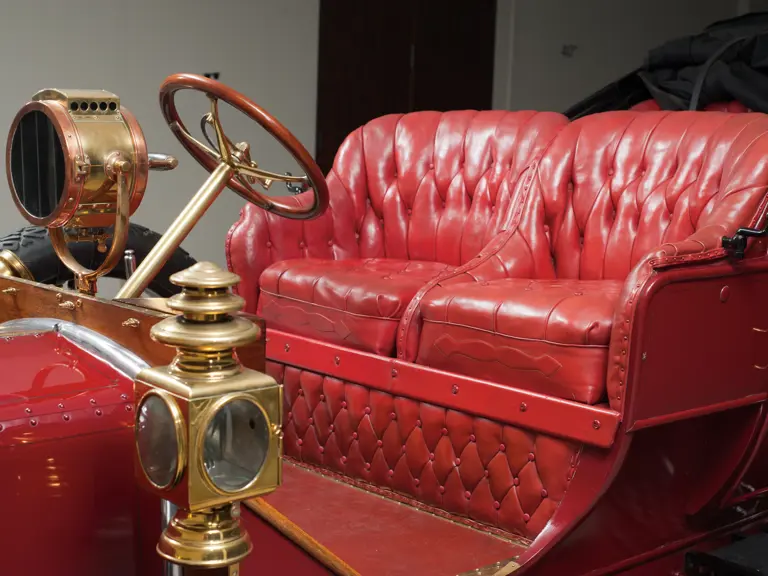
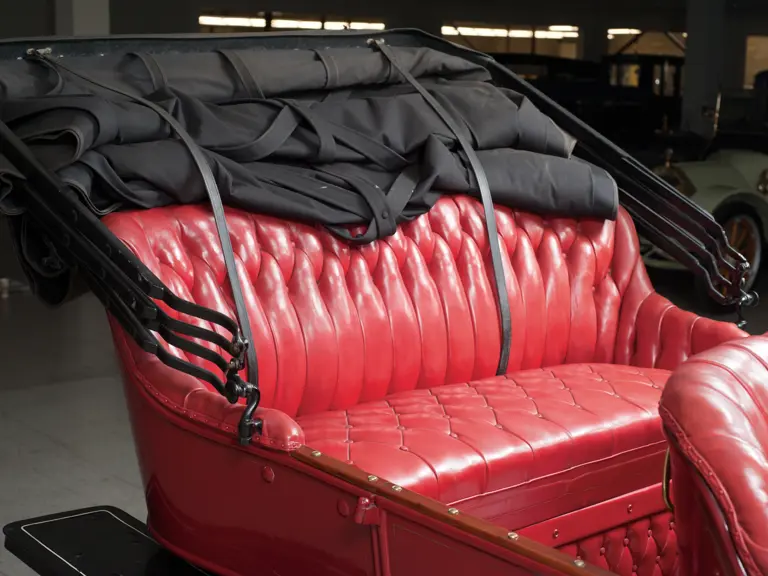
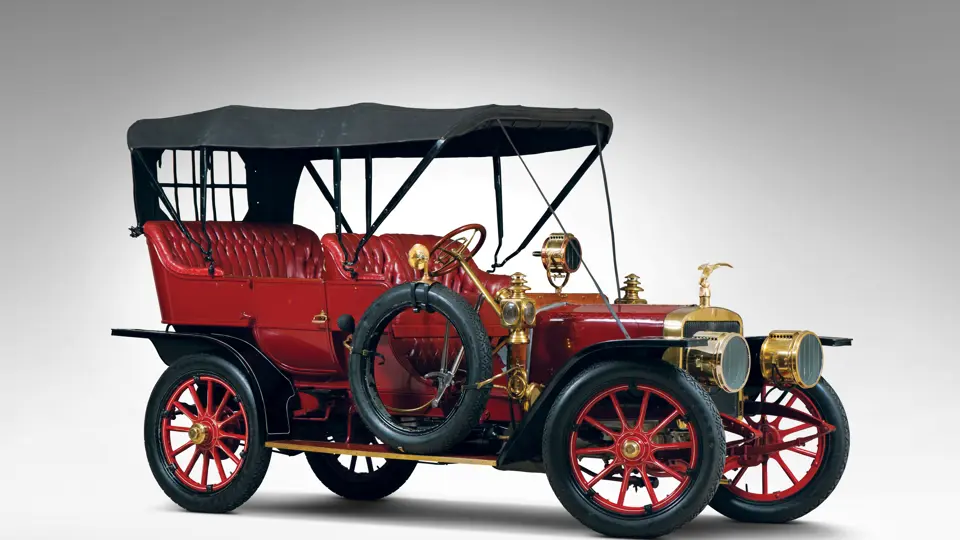
 | Hershey, Pennsylvania
| Hershey, Pennsylvania
